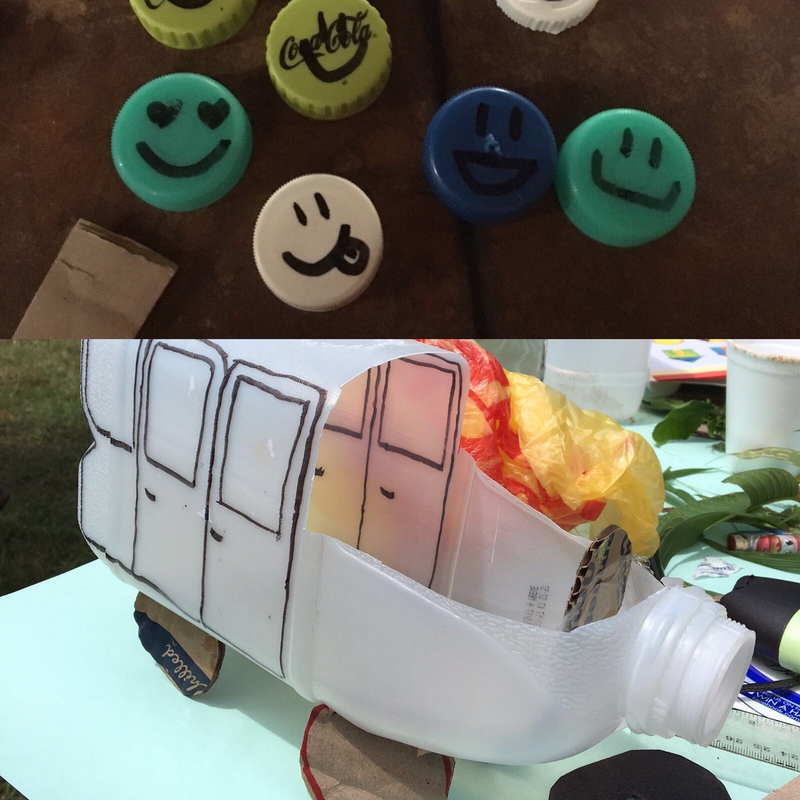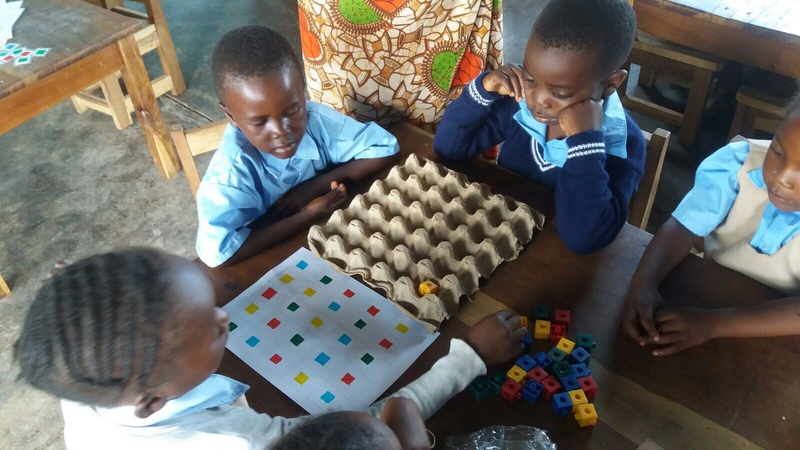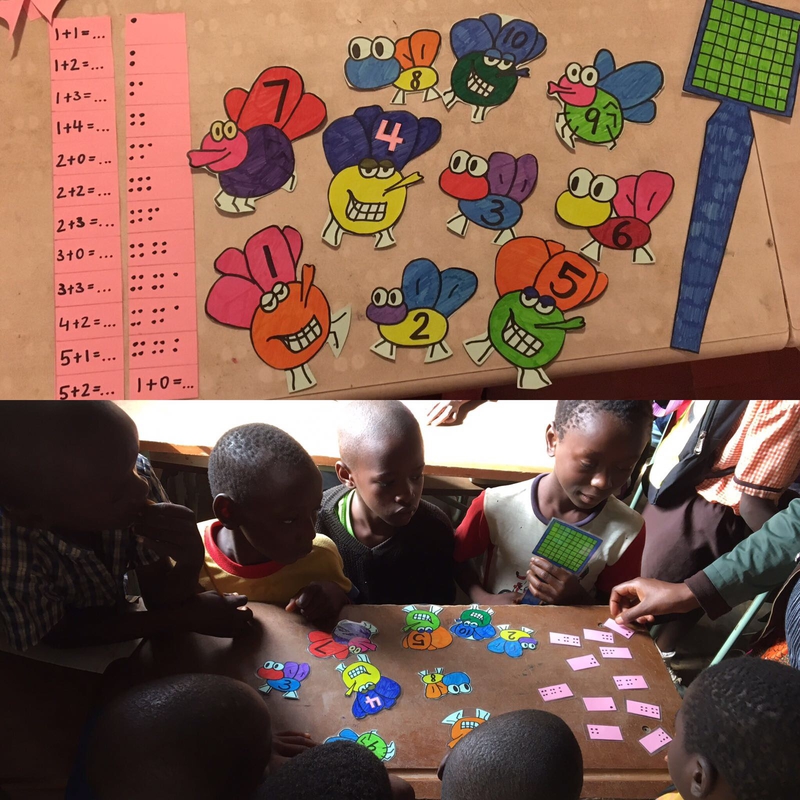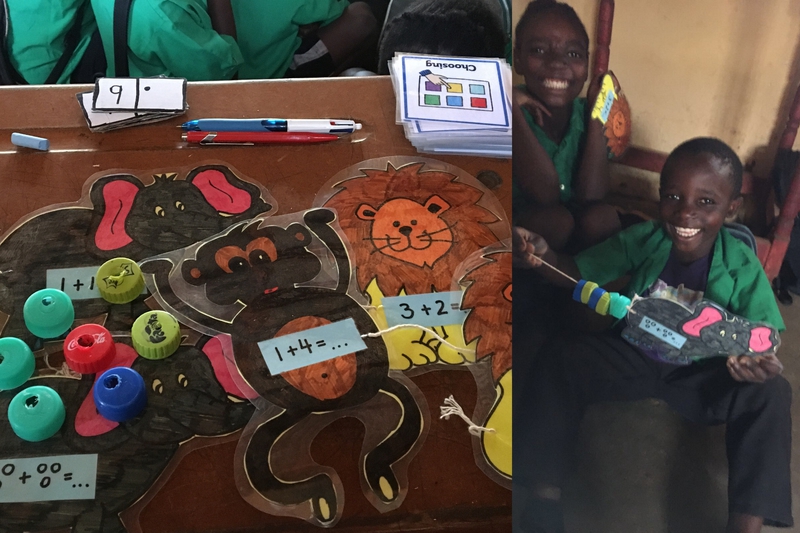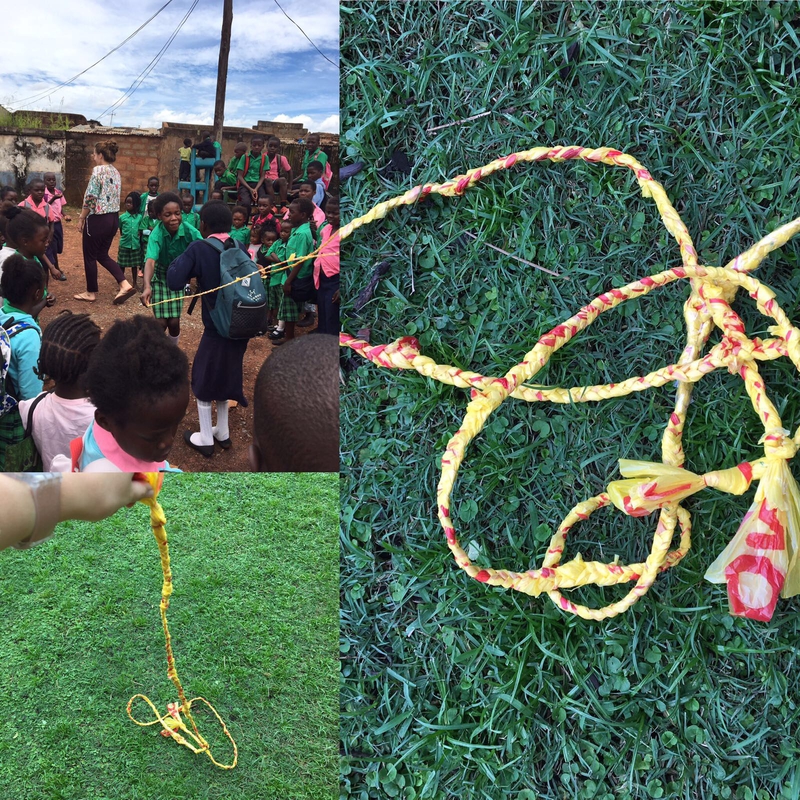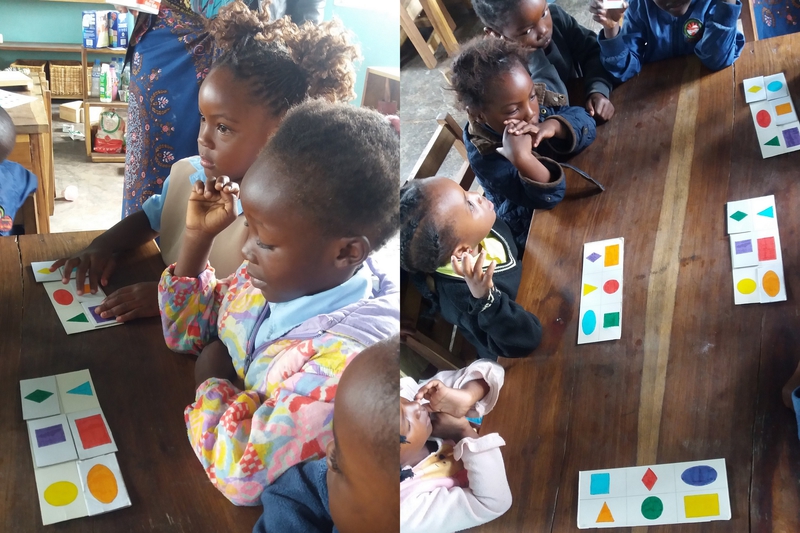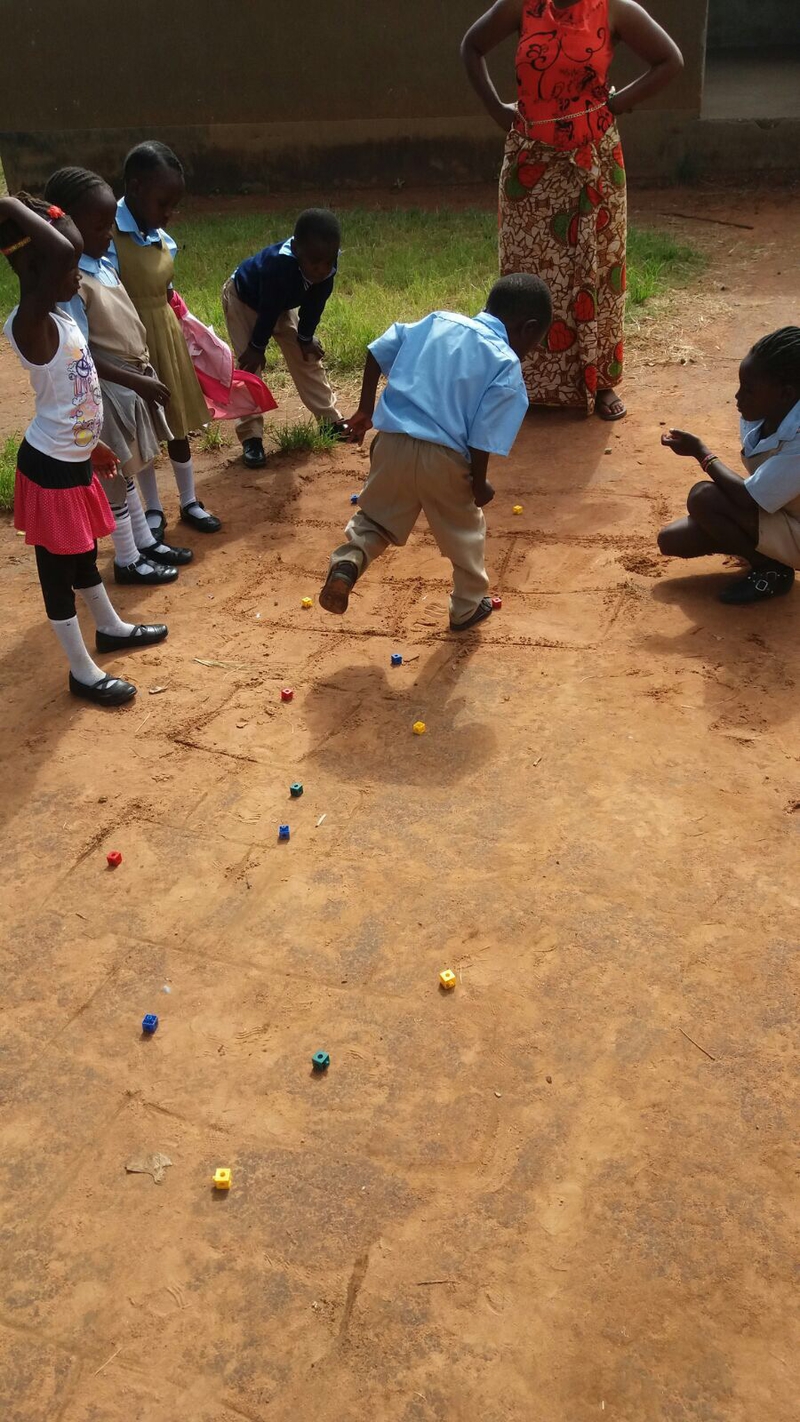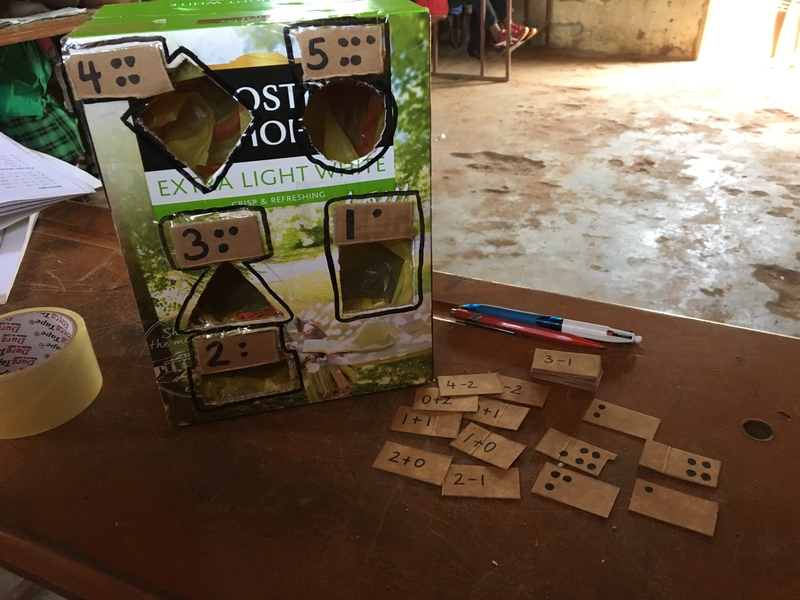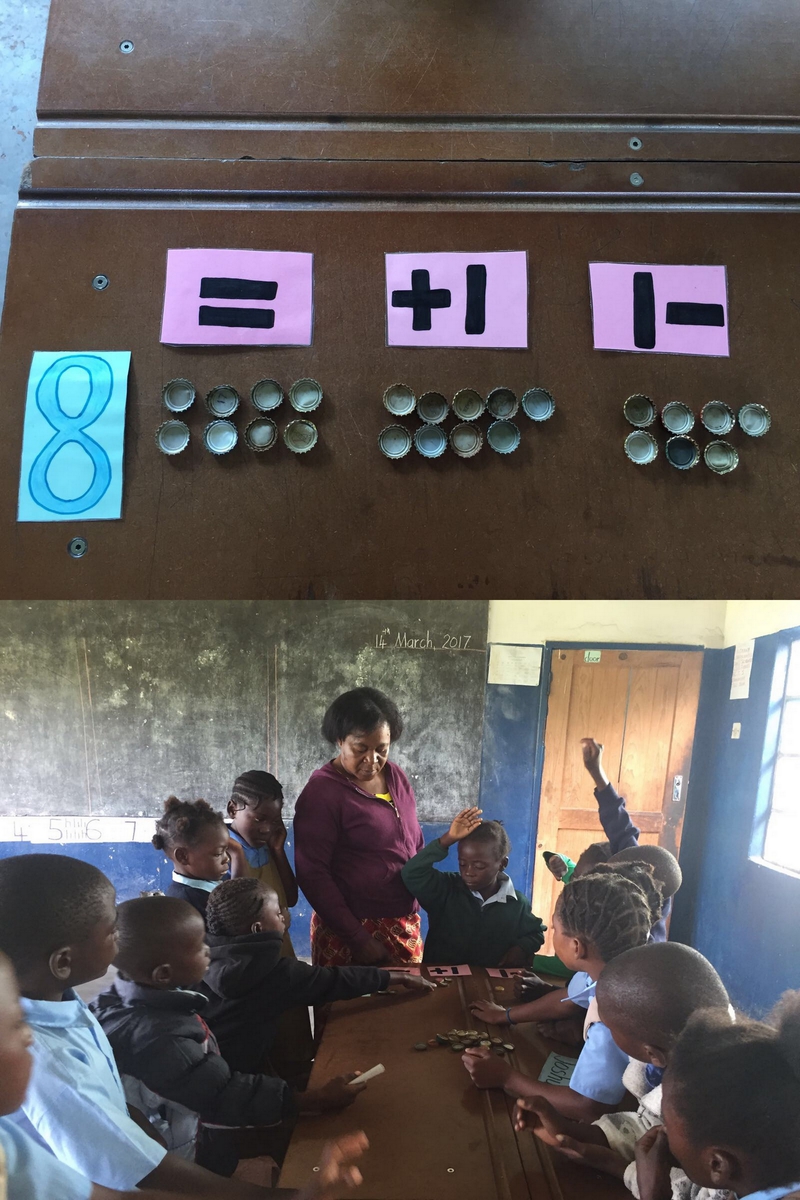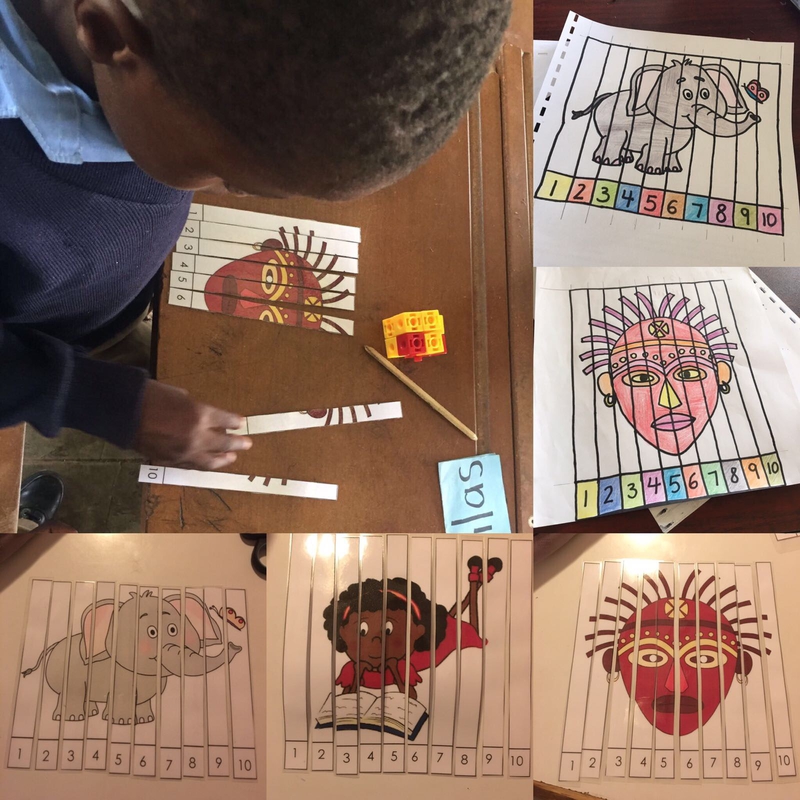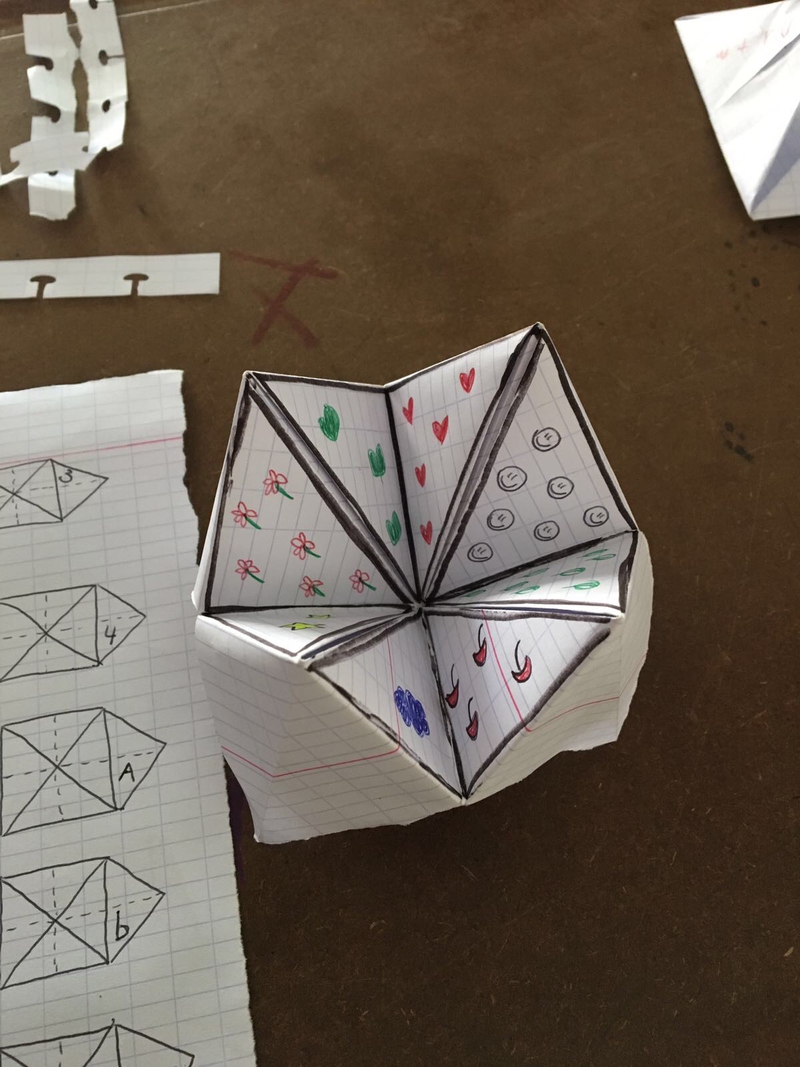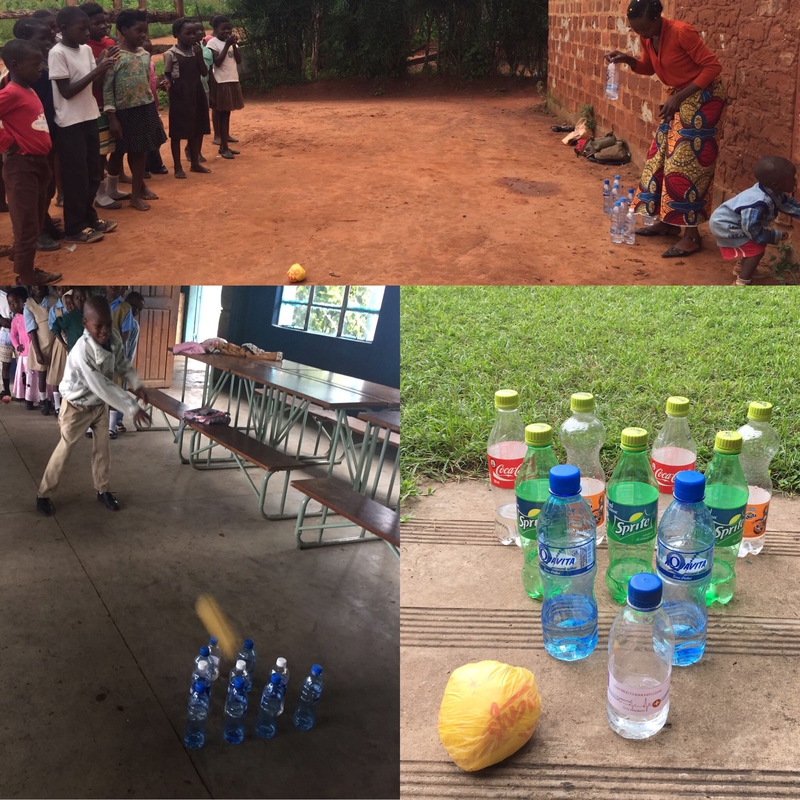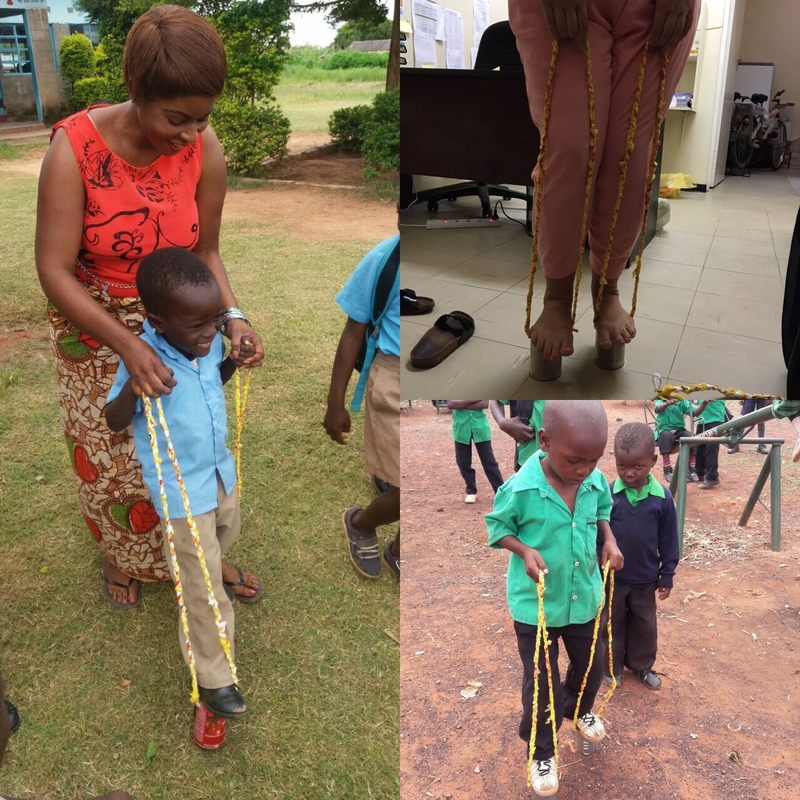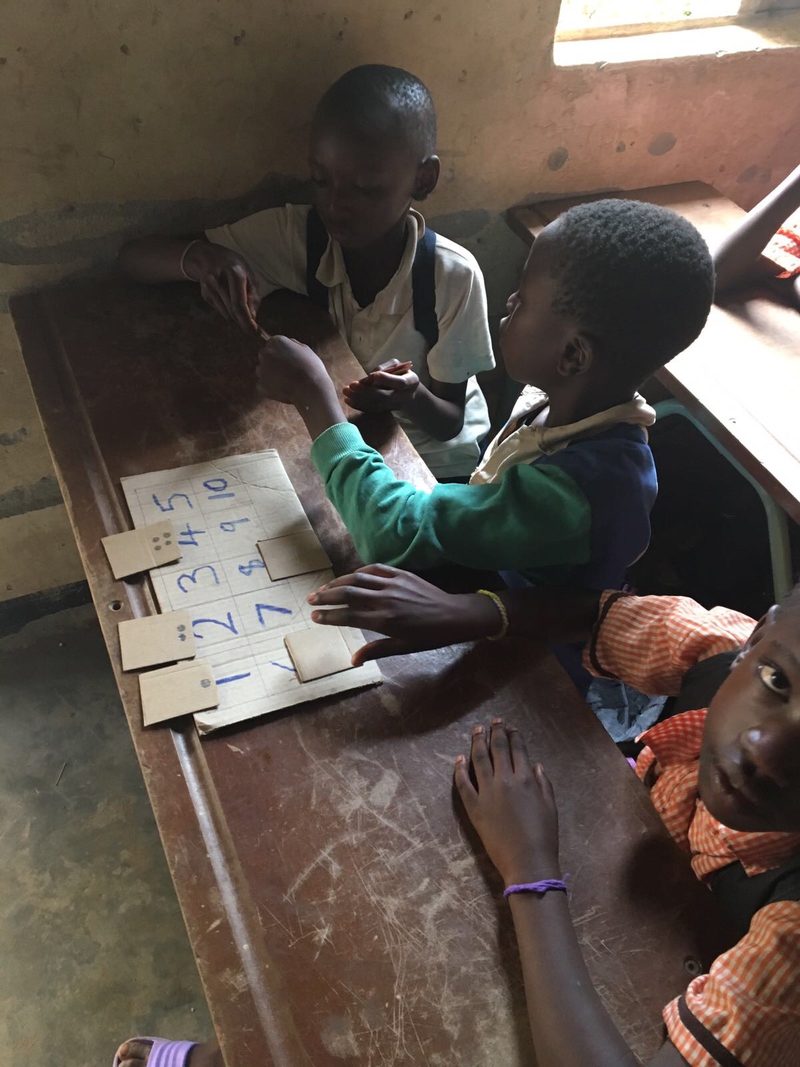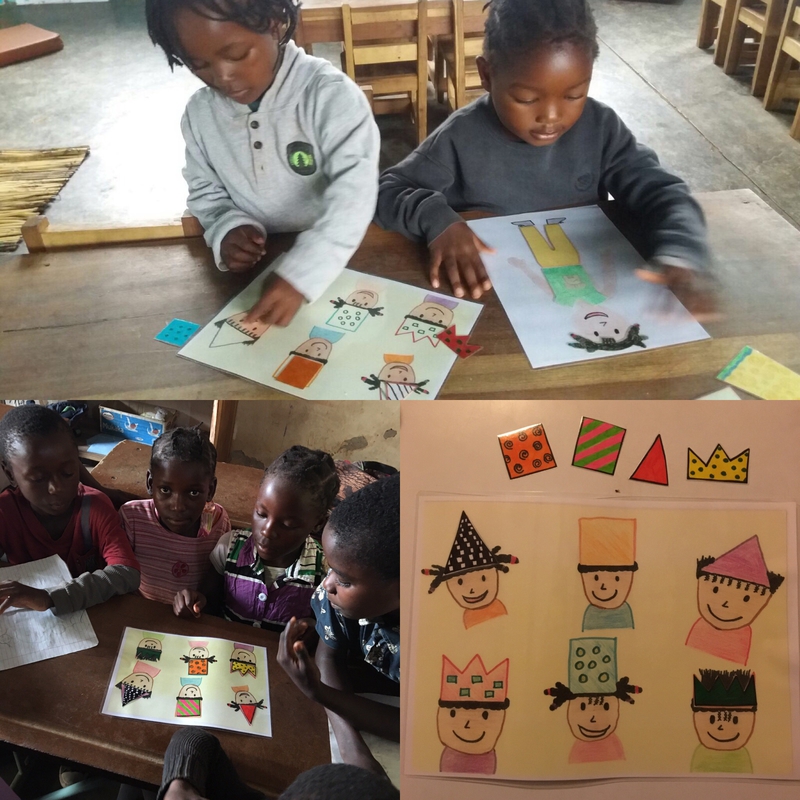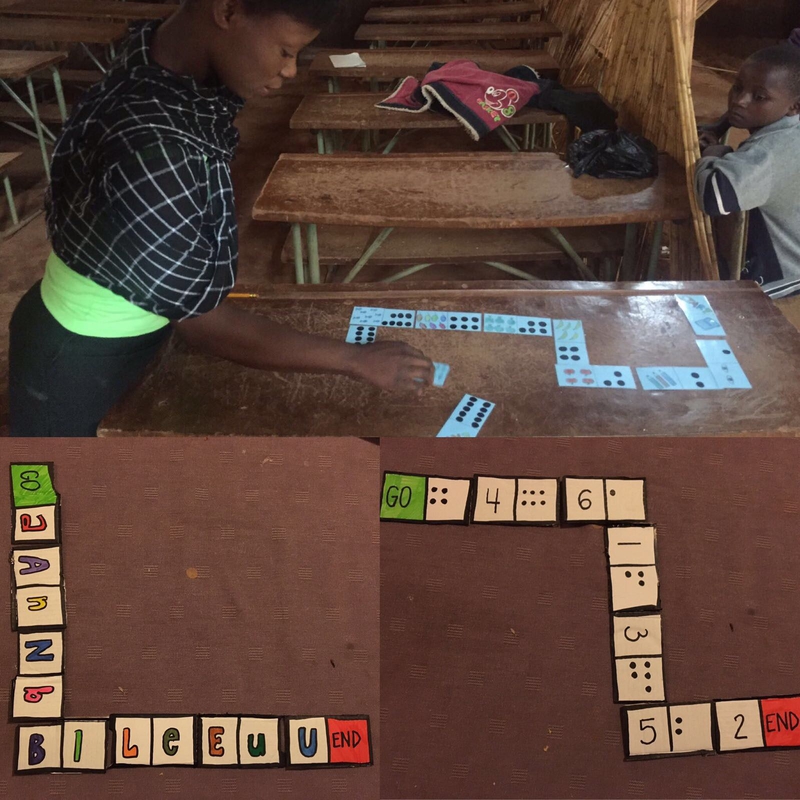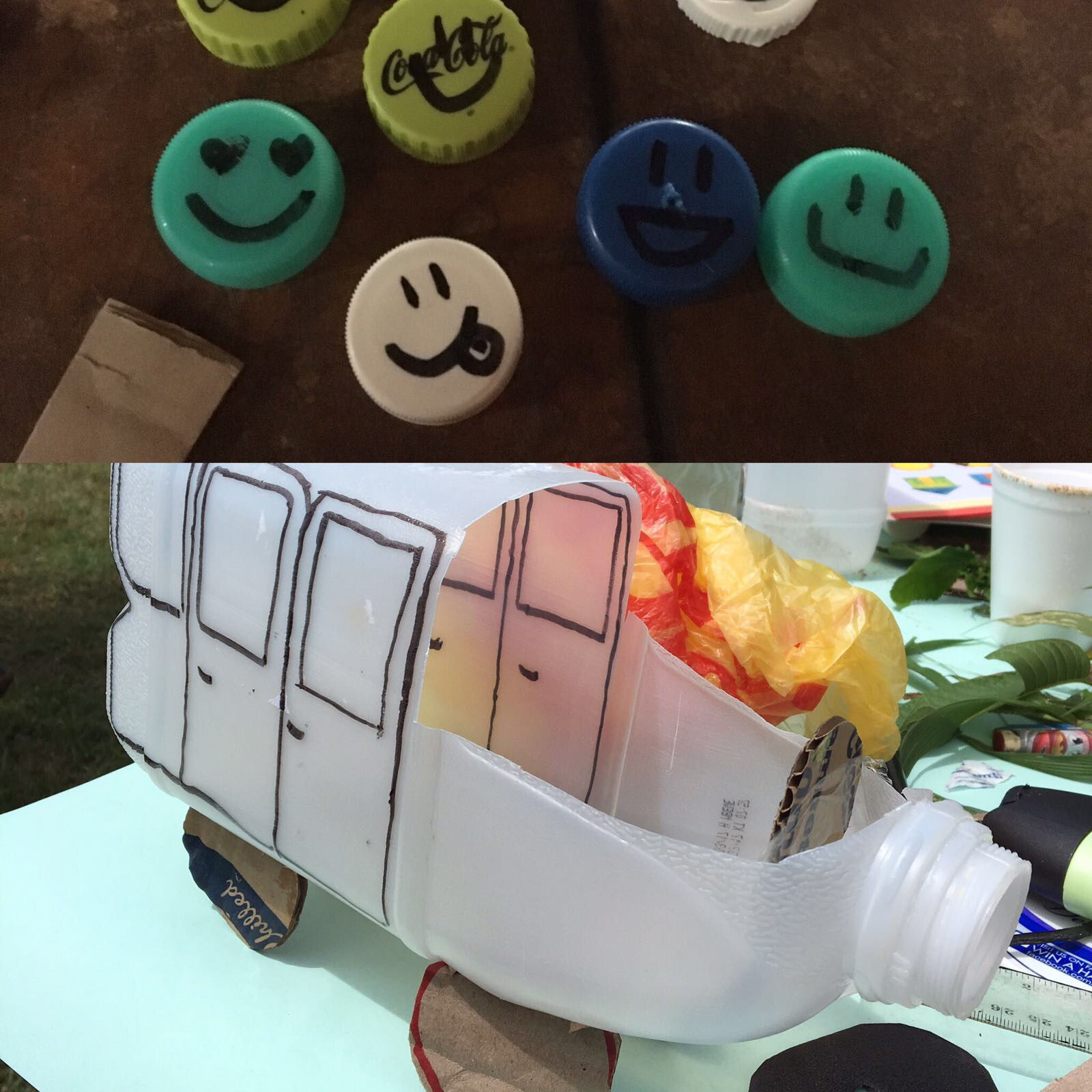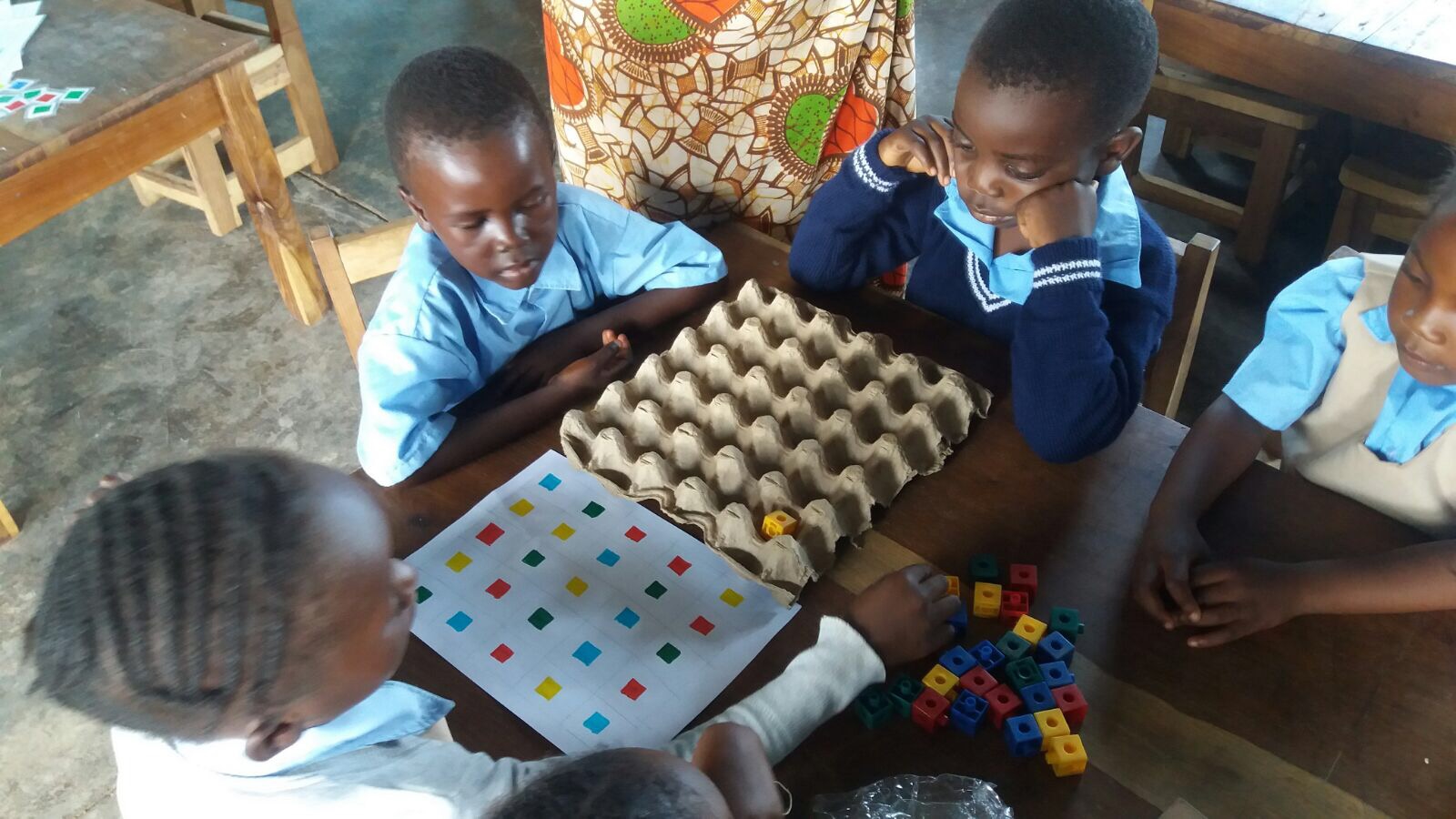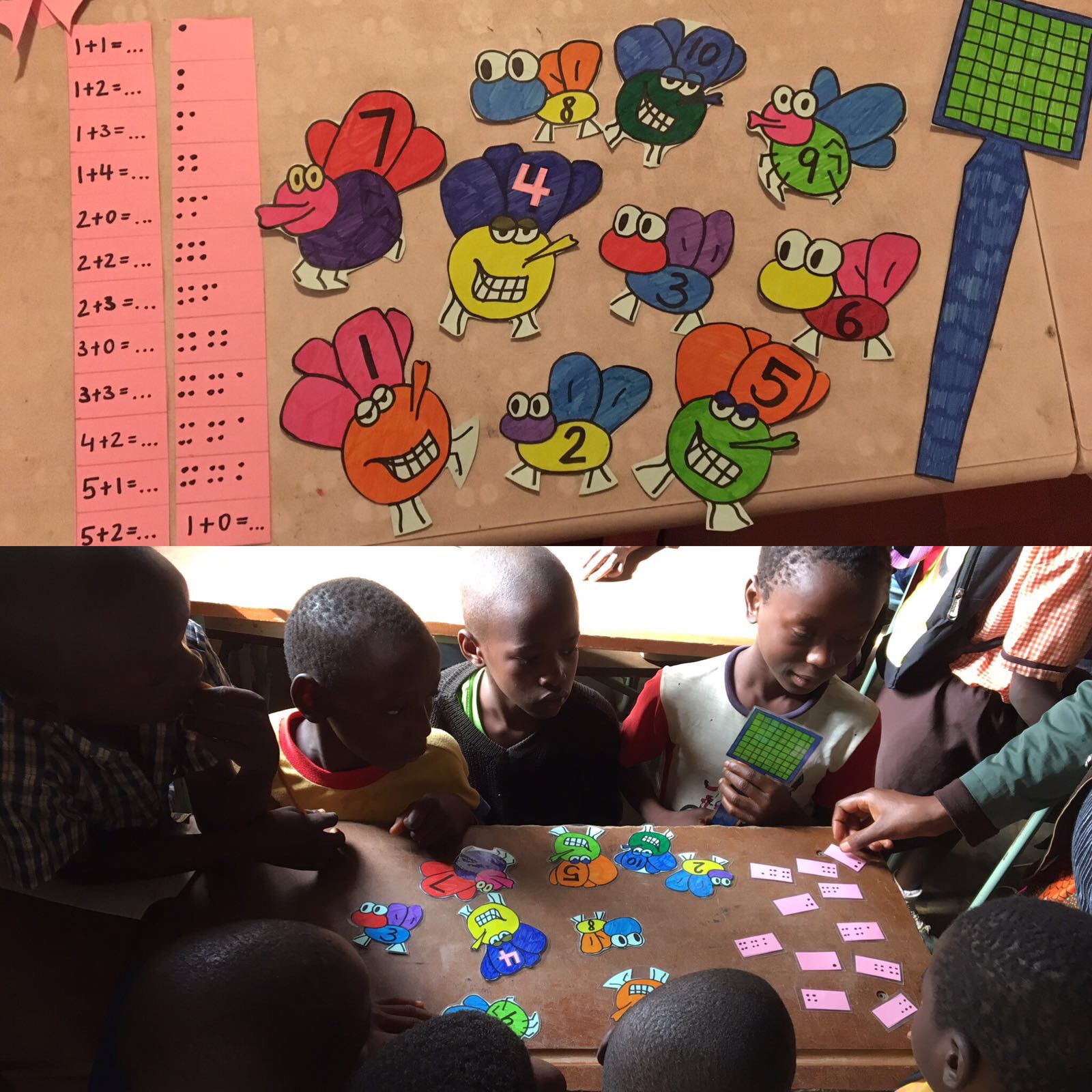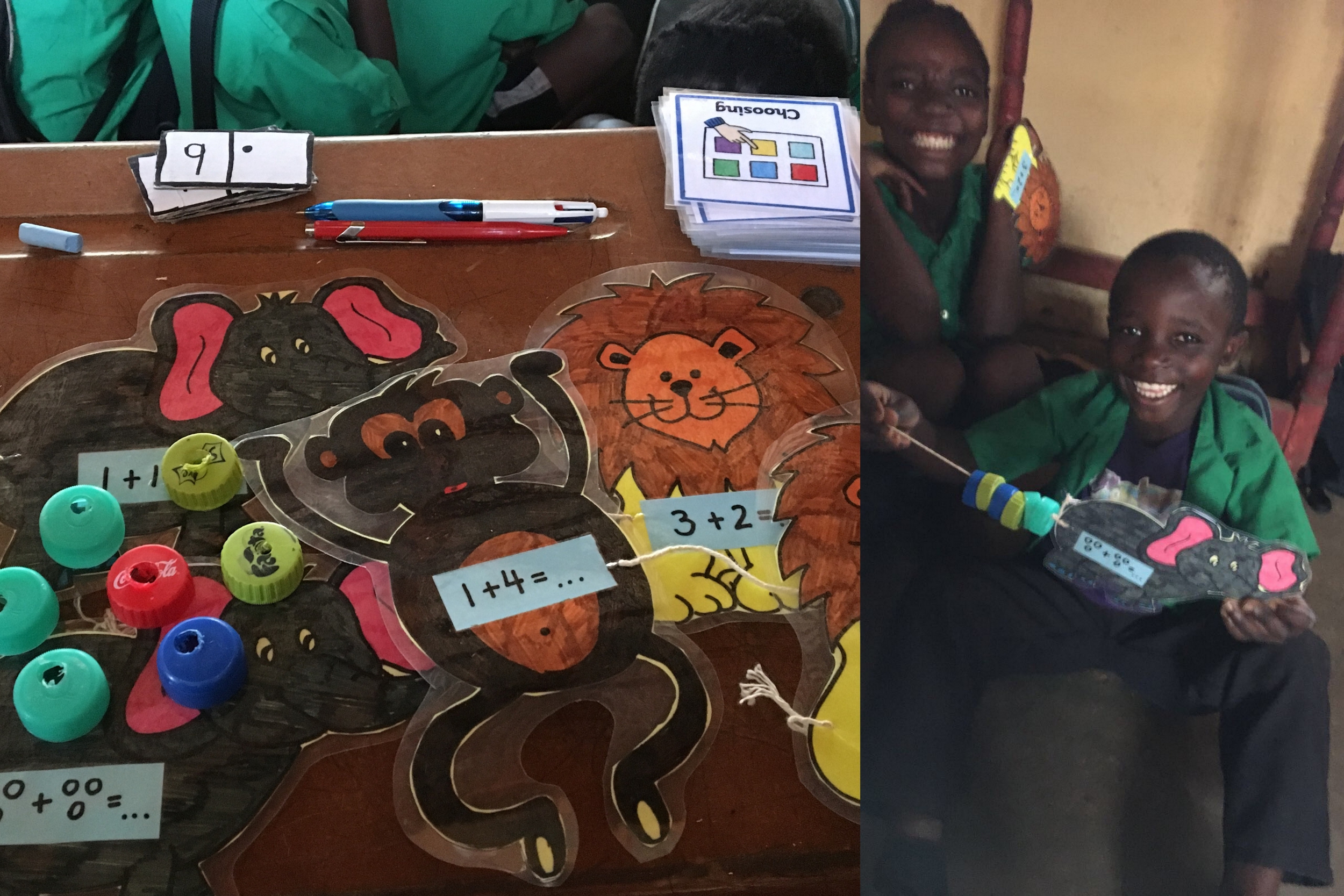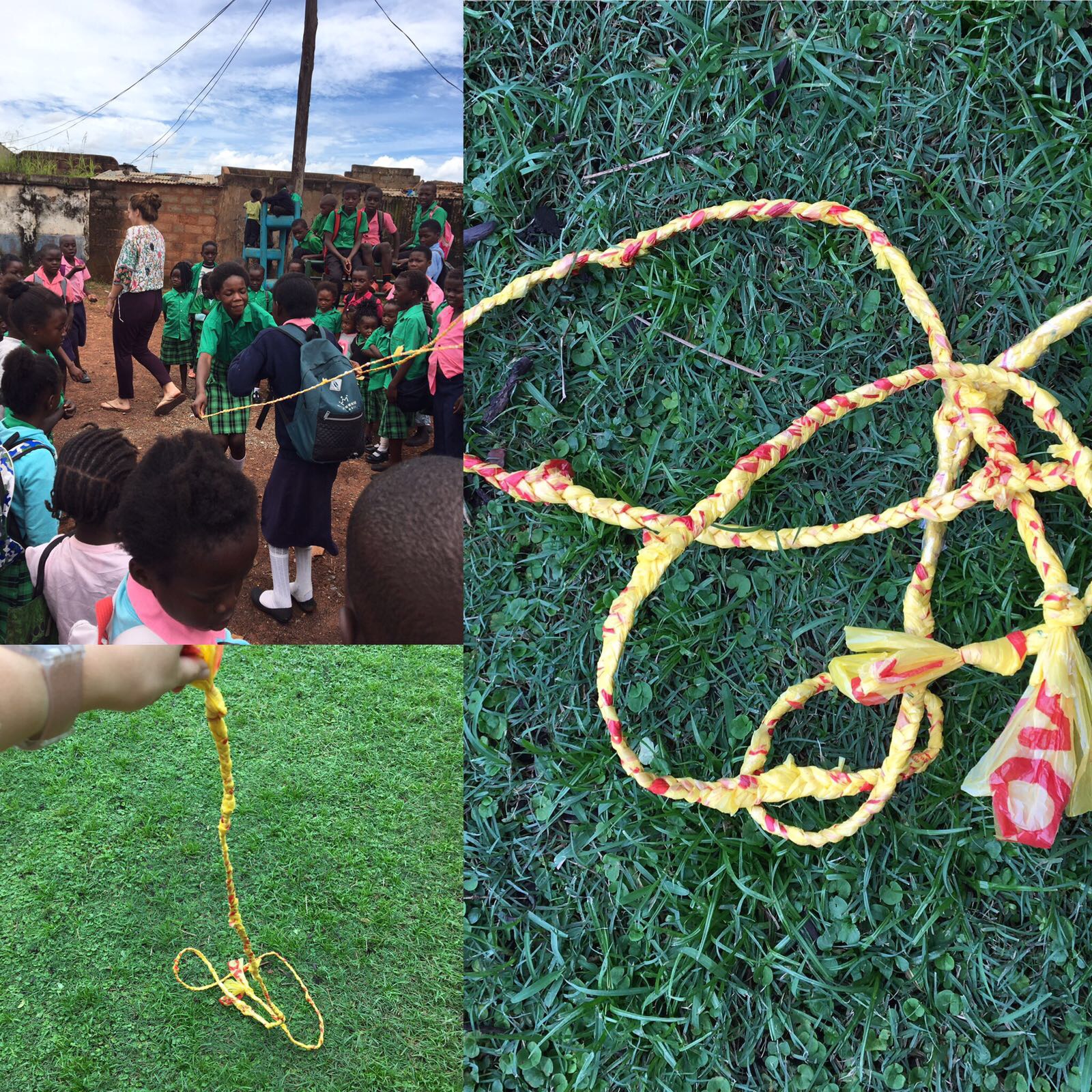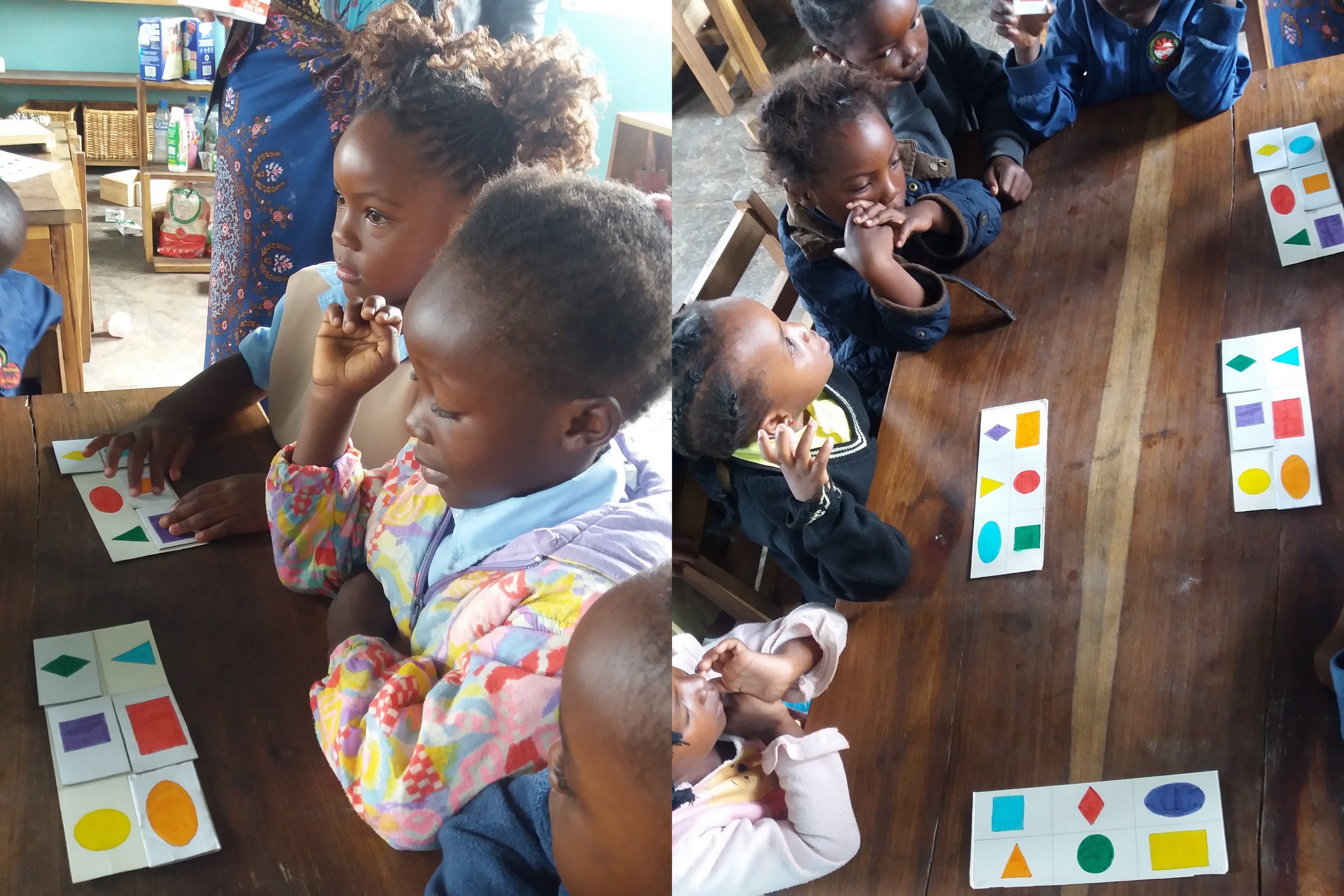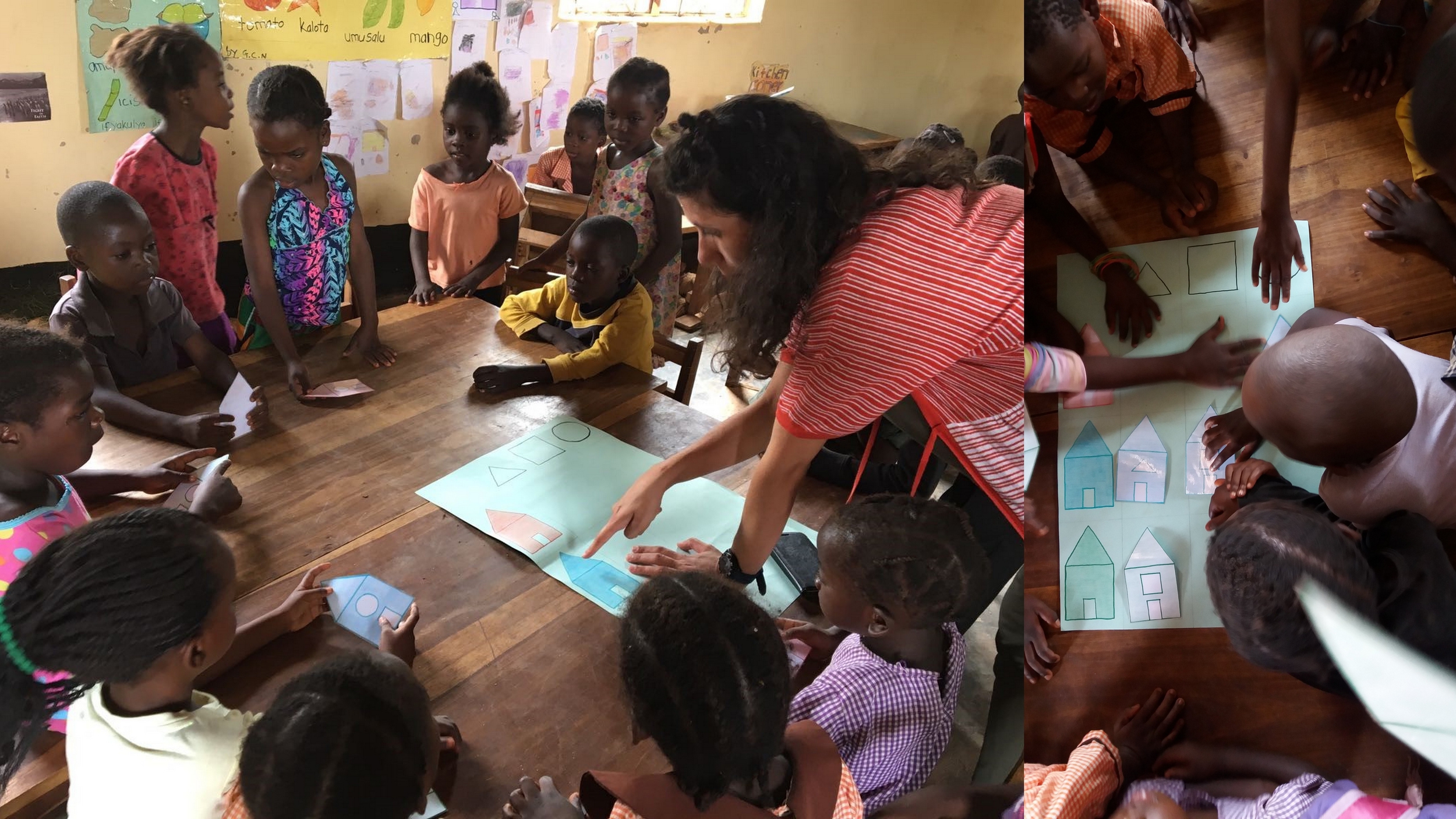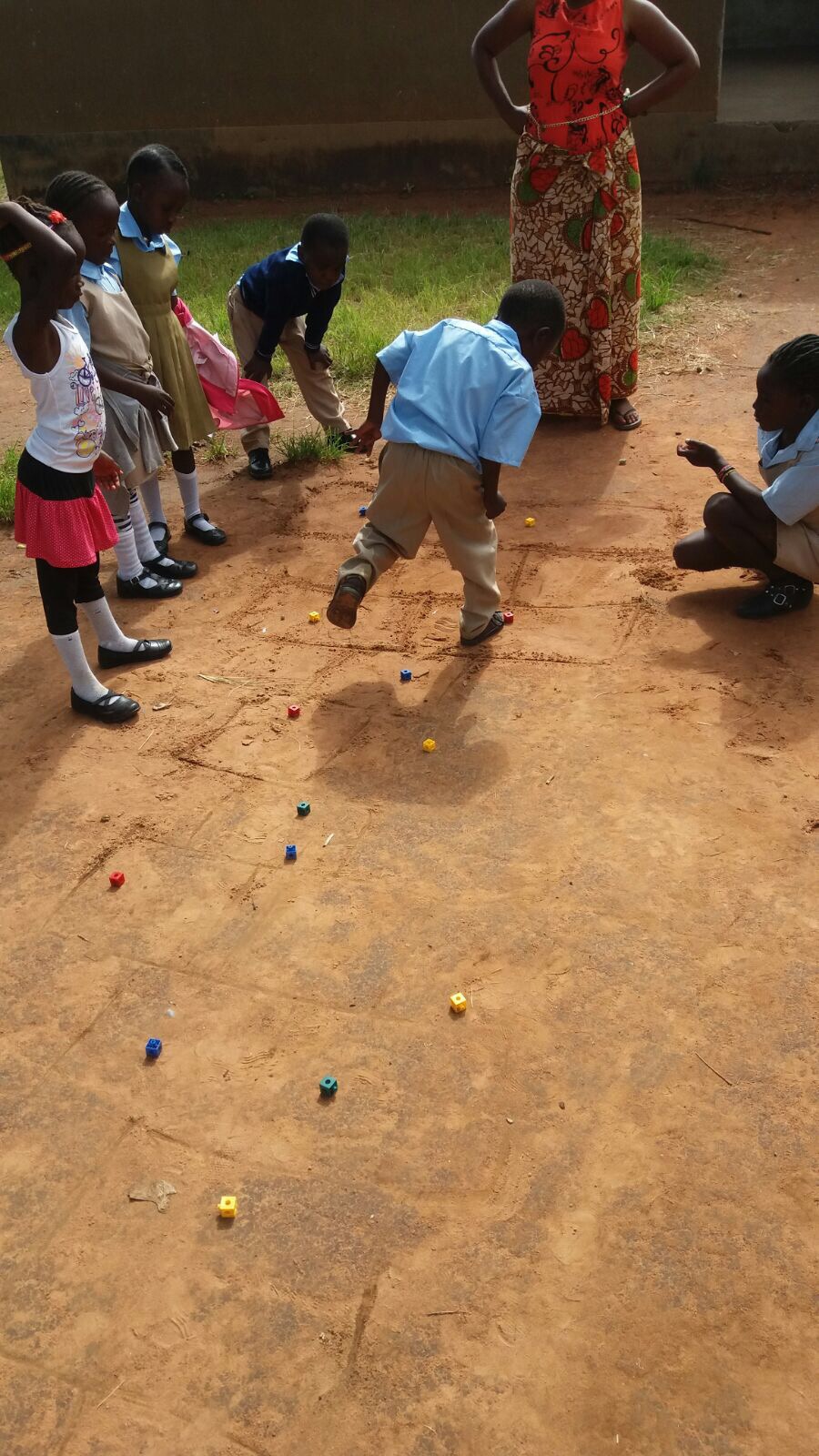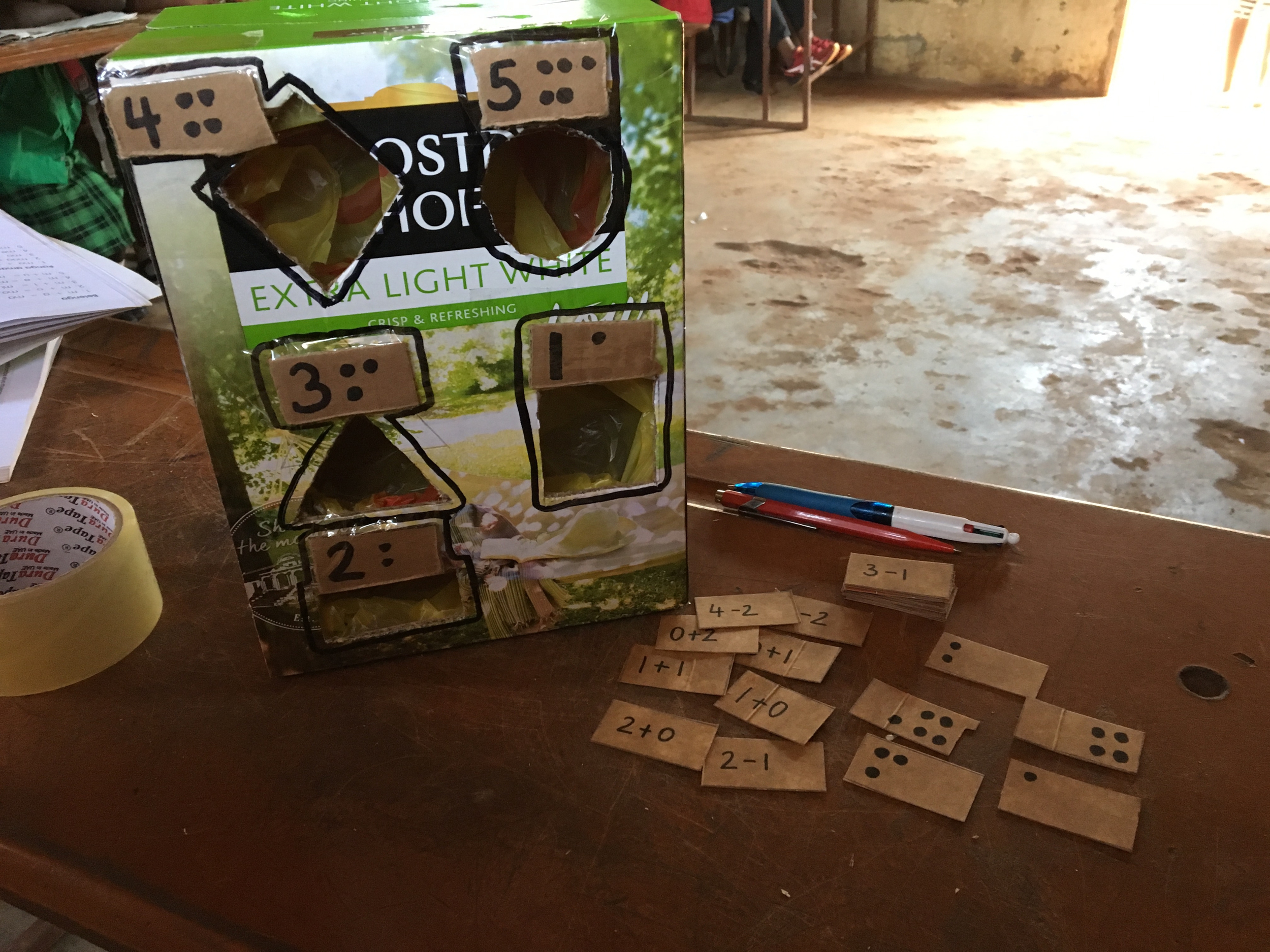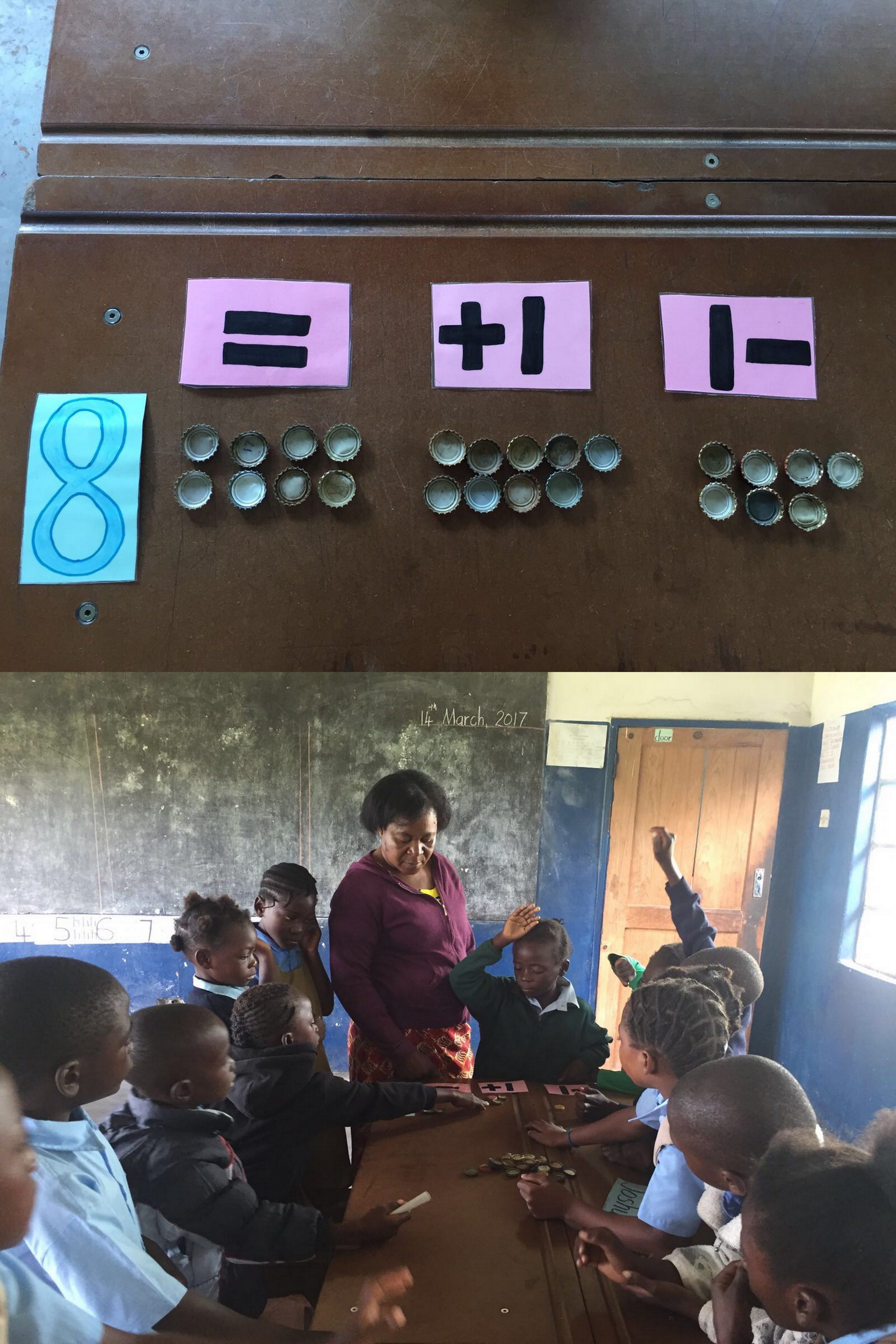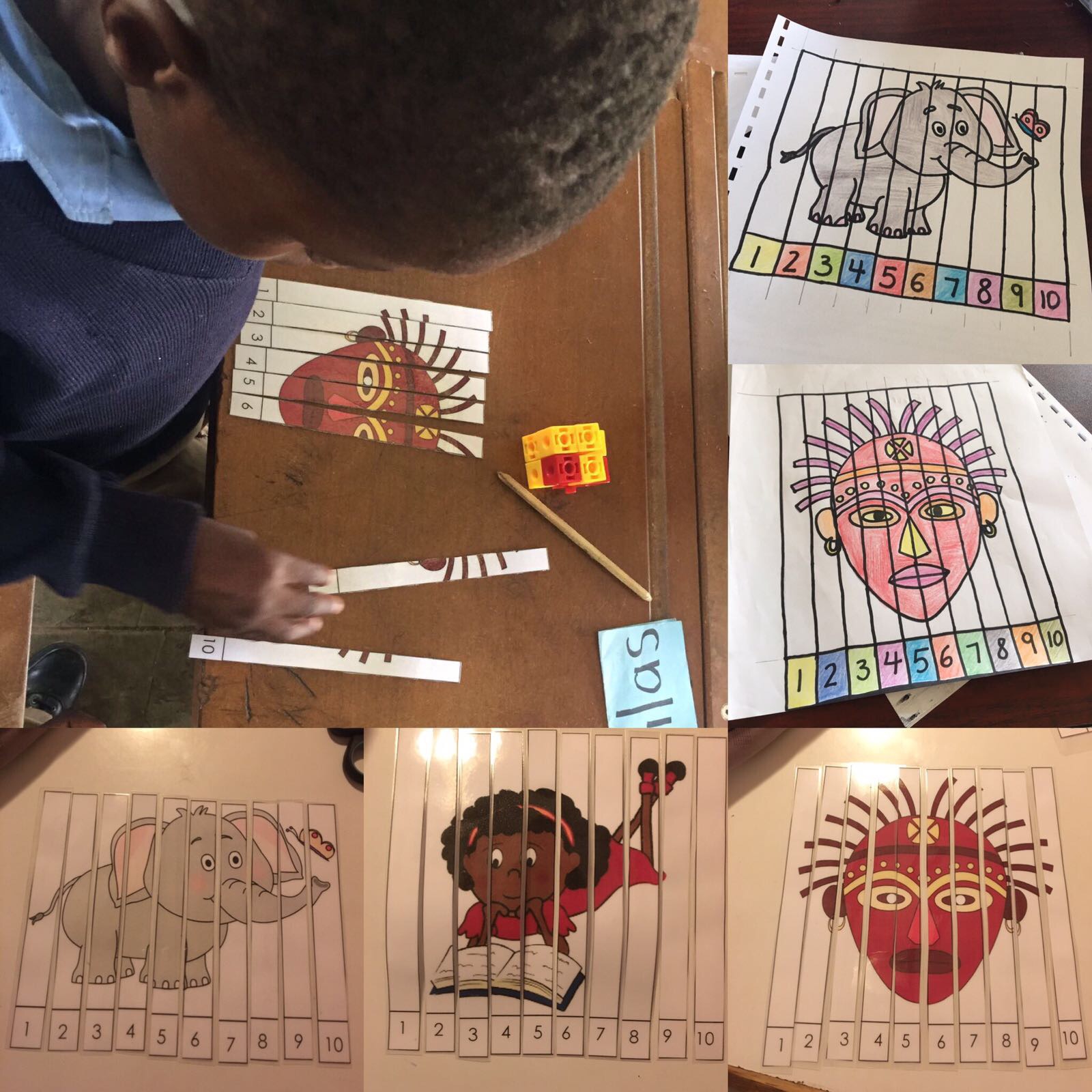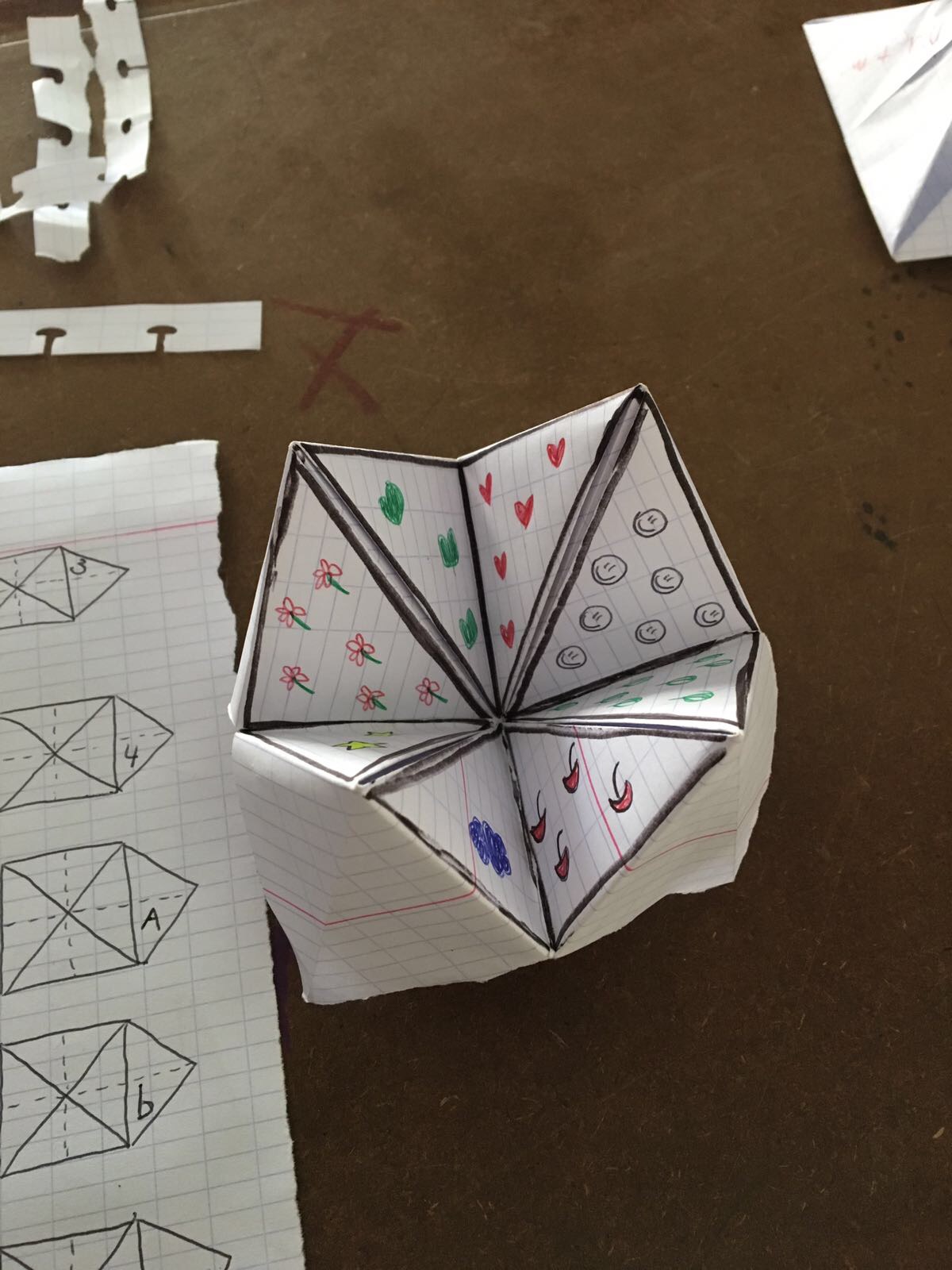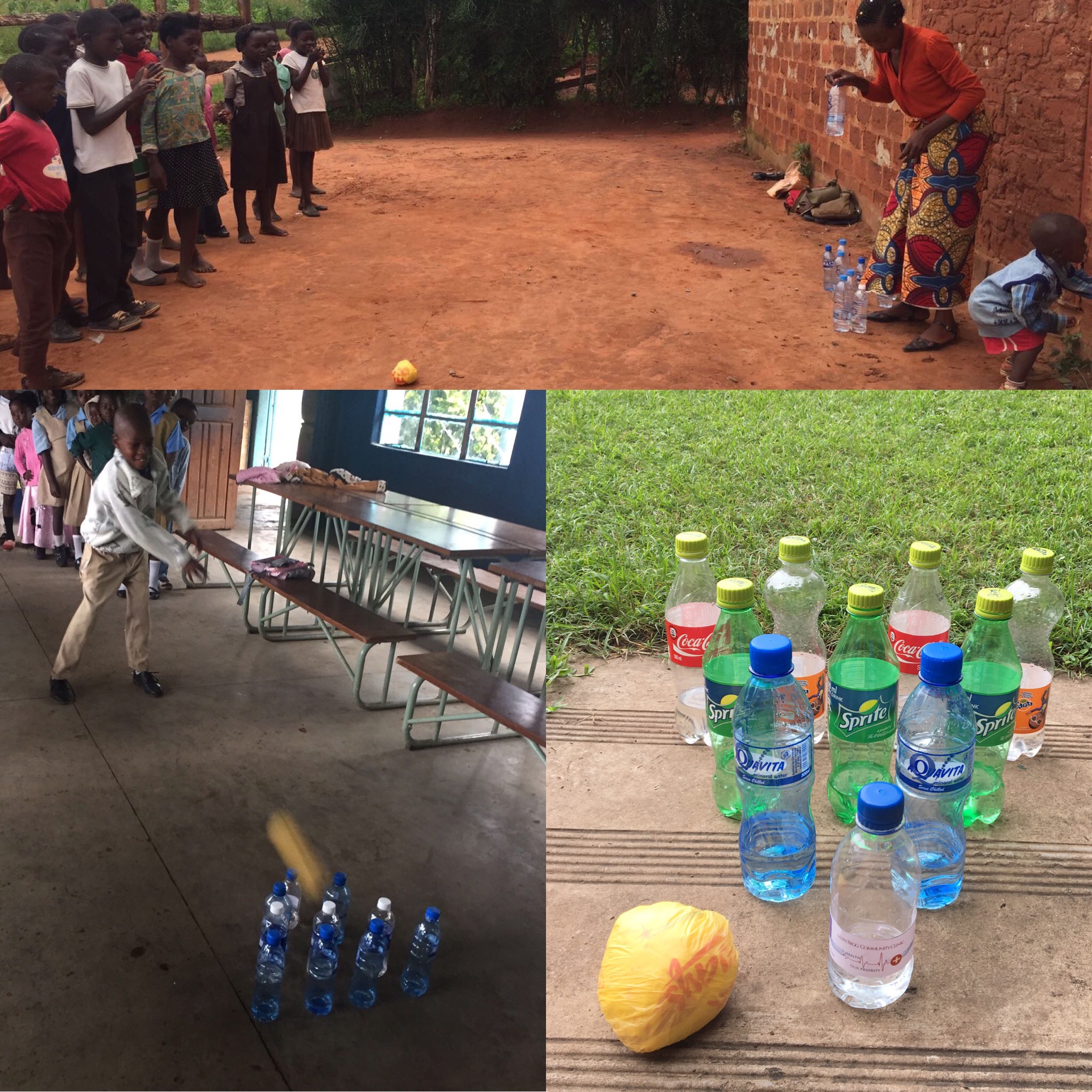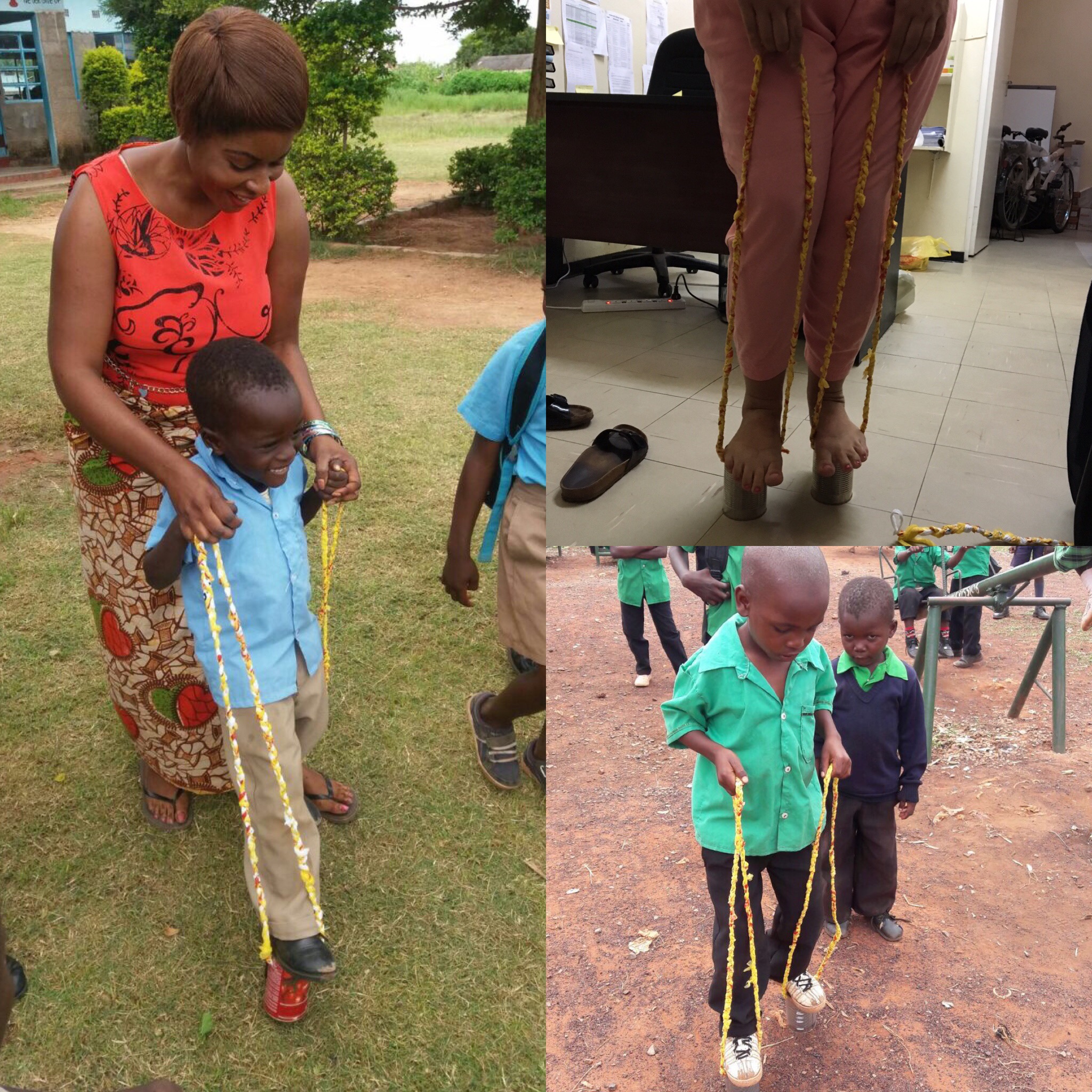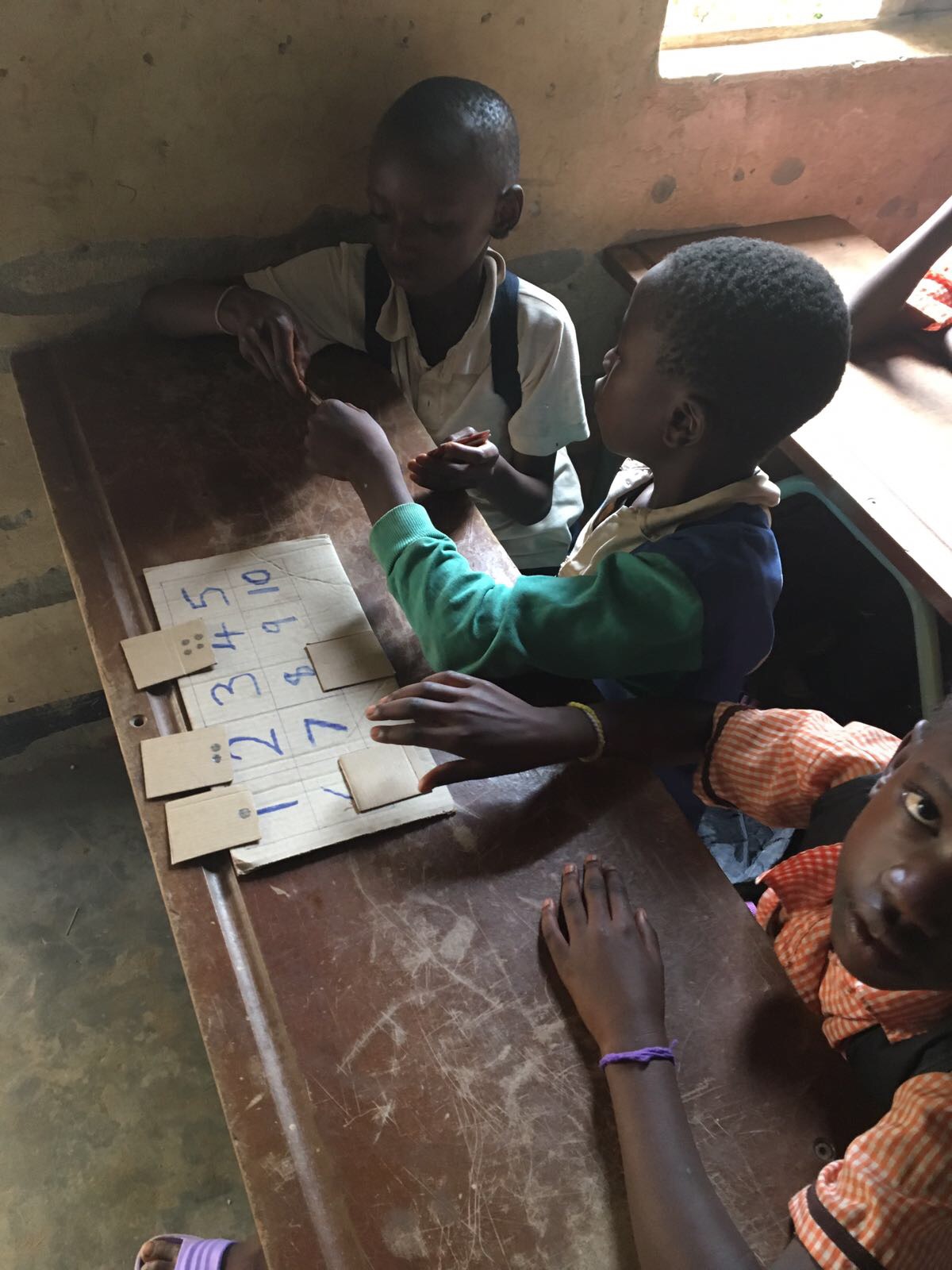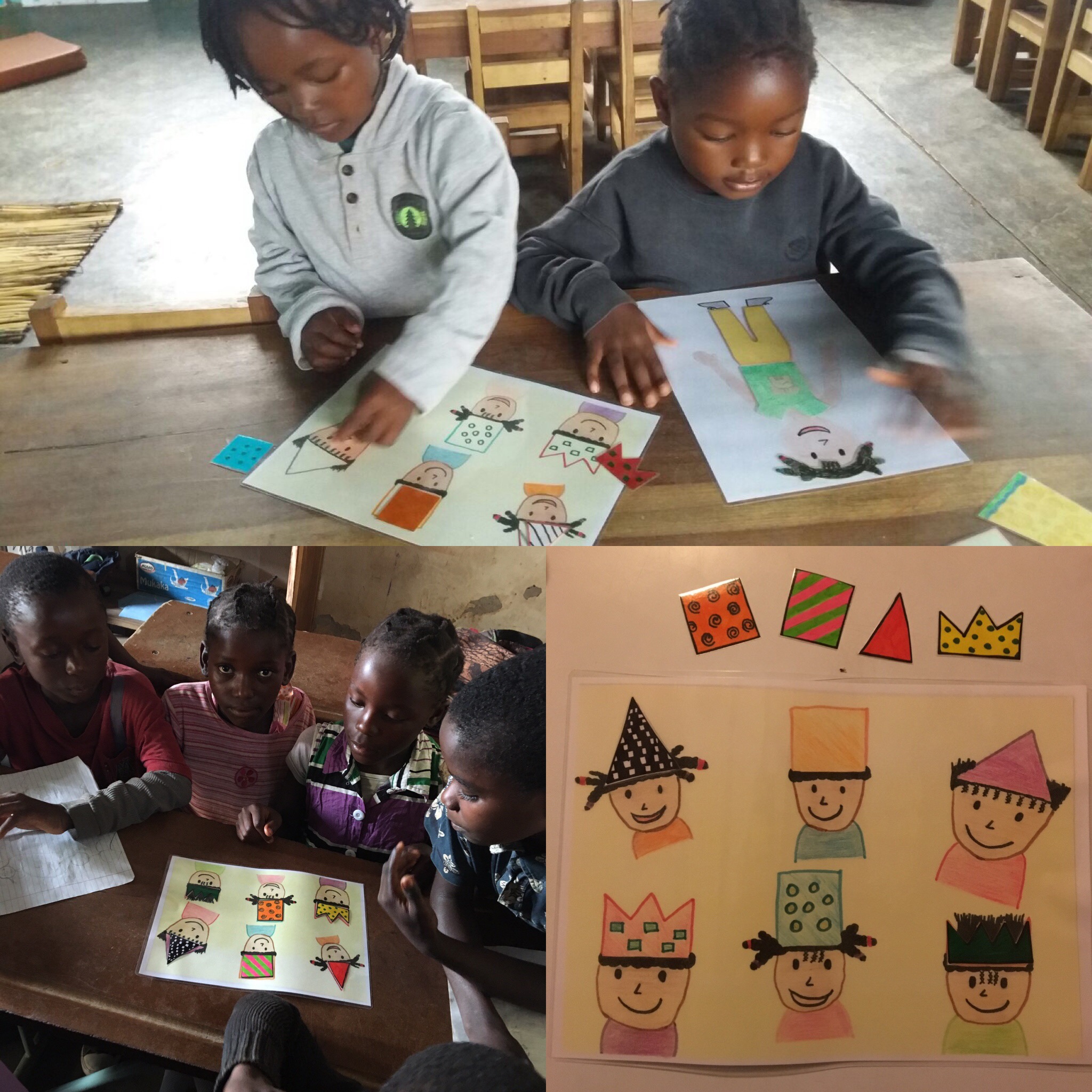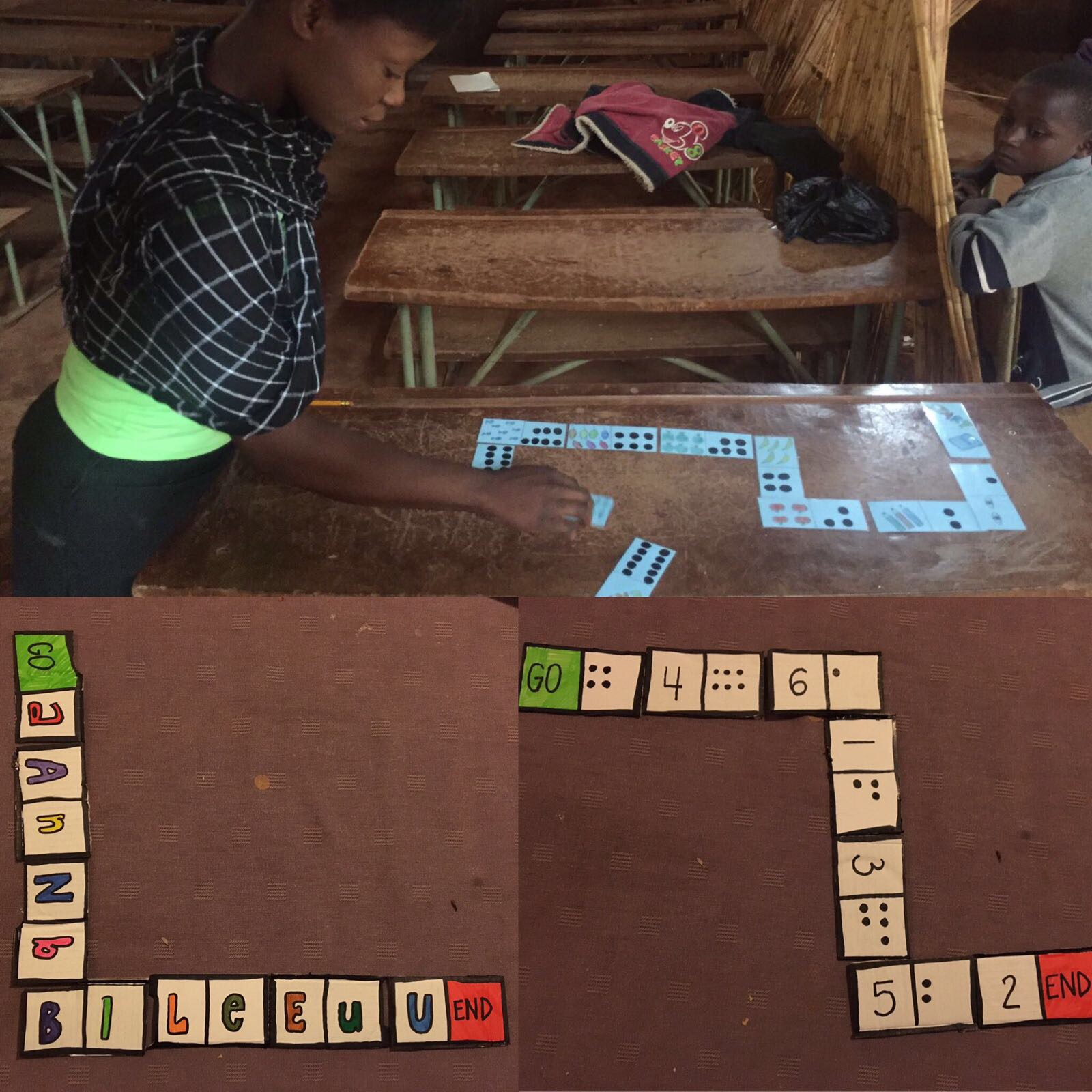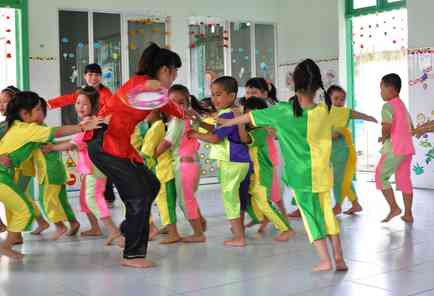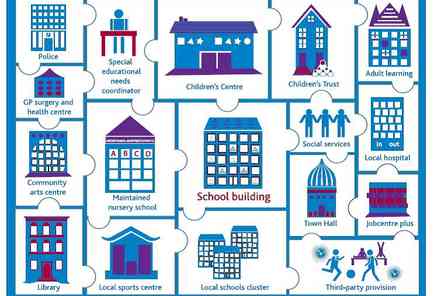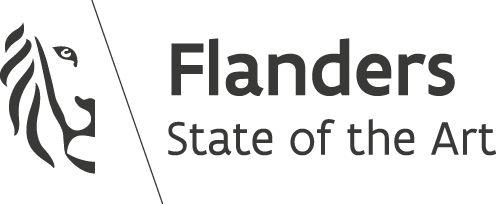The community schools in Zambia do not have many resources to offer quality education to their toddlers and primary school children. That is why they are very creative with disposable and low-cost materials. Four Belgian students went to support them in the development of didactic material.
Een creatieve stage
Sylvie Senesael (Bachelor of Early education Howest), Meghanne Roose (Bachelor of Primary education Howest), Paulien Houdart (Bachelor of Early education UC Leuven-Limburg) and Saskia Kennes (Bachelor of Primary education UC Leuven-Limburg) did an internship in spring 2017 in four community schools in Zambia. They supported the teachers via class tips and the production of didactic materials. They participated in a project to liven up the playground and make it more active. The students also guided the teachers in using materials that the schools received in the framework of the QEECS-programme.
The students or the teachers tested the materials they developed. When the teachers tested the materials, the teaching objectives were well explained. The students also gave teachers instructions for proper use of the materials. They participated and observed so the materials or instructions could be improved if necessary. Afterwards, the students wrote a manual for the use of the materials and gave workshops in which the teachers learned to make materials themselves. A major point of attention was the use of materials that costs little or no money. In this way, this became a feasible project for schools and teachers.
Meet the four community schools
In the Munonko community school, 68 toddlers between three and six years old are enrolled. About 40 toddlers come regularly. Jane and Gwendoline teach the early education class. Gwendoline is also the director of the school. Prudence teaches the children in the first and fourth grade. In the first grade, 25 of the 33 registered children attend regularly. Some children are seven years old, most are ten to eleven years old, but some students are already thirteen years old. It is a challenge for teacher Prudence to address the world of all students.
Seven teachers and a director work in the Little Angels community school. The early education class counts fifteen students, four boys and nine girls. Ages fluctuate between three and six. The director's daughter is also in the early education class, even though she is only two years old. Every grade has its own teacher. The first grade counts 23 students, ten boys and thirteen girls. Ages fluctuate between six and nine. One-third of the children have attended early education. For the others, this is their first school experience. The school uses a pass-through system, every teacher goes with his or her students to the next grade.
In the early education class of Kaloko Kantanshi community school, 54 children between three and six are enrolled. Sandra teaches here. The 105 students of the first grade are divided into two groups. Group one consists of about sixty students. They have classes from 7 to 10 a.m. The second group consists of fifty students who have classes from 10 to 12 p.m. It is quite a challenge to go through the learning materials in such a short time. In total, about a thousand children are enrolled in this school. Each grade has a teacher, but the classes are split into two groups. Otherwise, it is not feasible to have such large groups into a classroom.
Teacher Linda teaches in the Paraclete community school. She has 29 girls and 22 boys in her early education class. The primary school is in a shed that is split with black cloths so different classes can be taught. The building is used as a church on weekends. Therefore, the classes cannot be decorated with didactic material. Four teachers teach the primary schoolchildren. Part of the students goes to school in the morning, and the other part in the afternoon.
Take a look at the crearchive that they developed for the community school
Crearchive - PART 1
